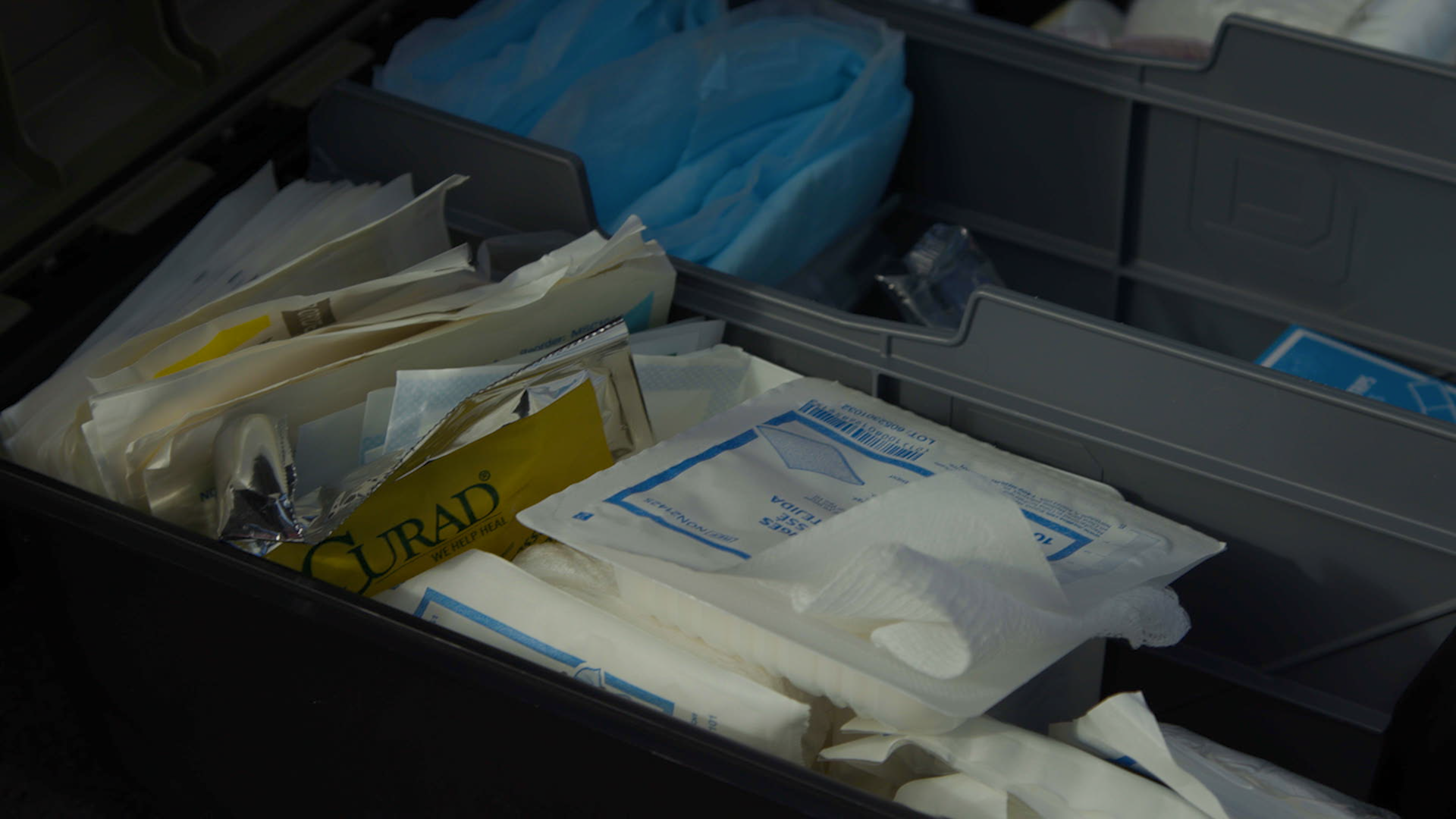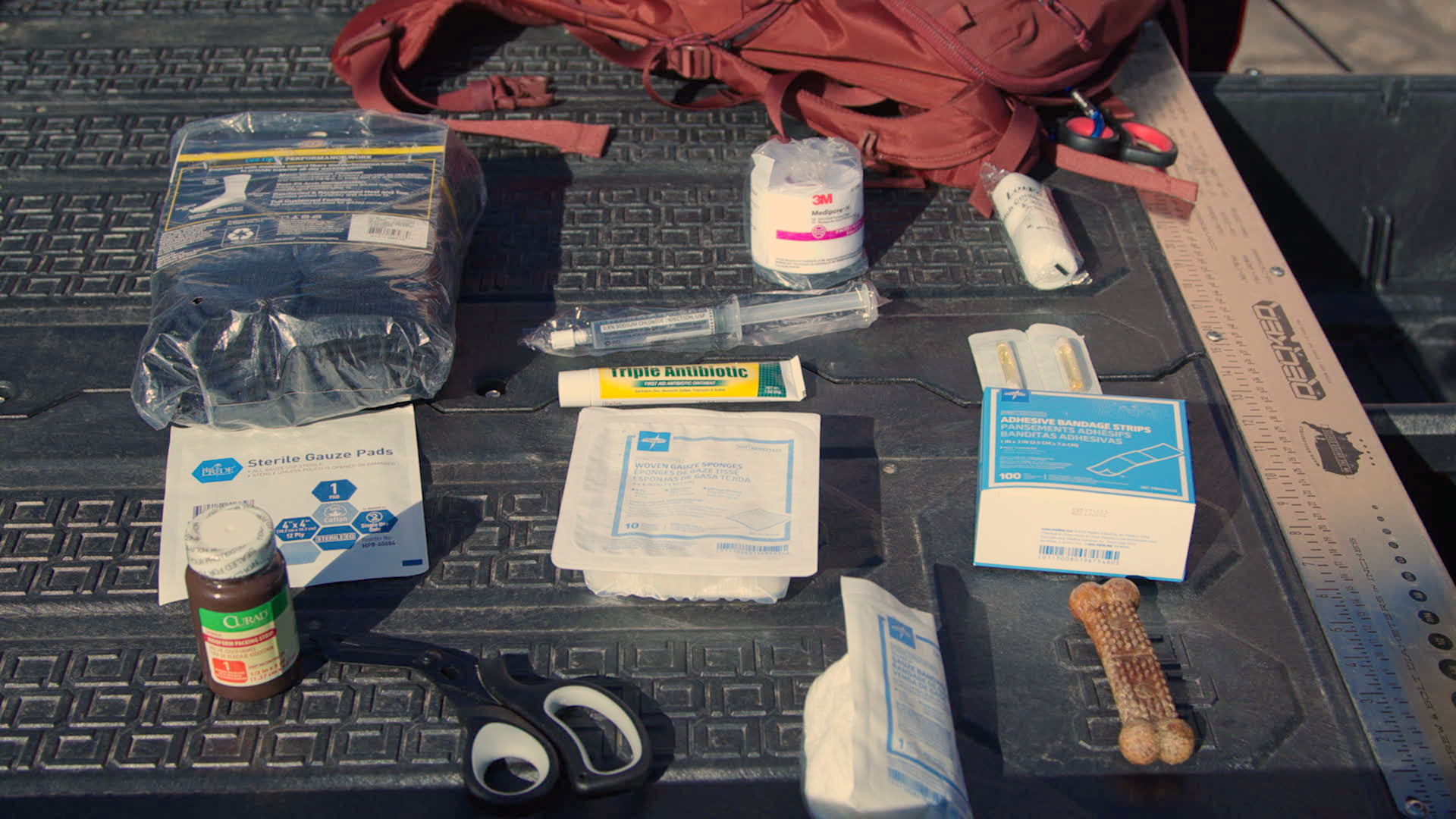When you think of going to a doctor, you might imagine a waiting room, an exam table and maybe even a provider in a white coat. But Lindsay Fox, MSPAS, PA-C, prefers a vest and a backpack when she brings care directly to her patients on the street. It’s called street medicine, and now The University of New Mexico physician assistant who leads the program has the vehicle she needs to reach more people.
“What we find with folks experiencing homelessness or transitional housing, is it is really difficult for them to get to a clinic,” said Fox, who works in UNM’s Department of Internal Medicine within the School of Medicine. “So, rather than forego medical care, we bring it to them.”
Fox will now be bringing medical care to people in a new truck, outfitted with storage containers for all of her supplies.


Fox displayed the truck at a recent news conference for the City of Albuquerque. Officials discussed their efforts to record how many community members are experiencing homelessness, so they can provide appropriate outreach and services. Fox’s collaboration with Albuquerque Community Safety has made a direct impact on hundreds of people, many unable to seek care on their own.
“Having people show up for appointments can be really burdensome. It can be the difference between losing all of your possessions and getting health care,” Fox explained. “I don't think that's a decision that any of us should have to make.”
Fox said she is expecting to get a top cover for her truck, so she can store even more vital treatment tools. In the meantime, she opened the truck bed to reveal a set of sliding drawers, already packed with things patients may need.
“This has a complete wound care kit,” Fox said. “We see a lot of wounds on the street, burns, wounds from assaults, abscesses, and so this has everything that we need to treat the patient to have them avoid going to the emergency room and stop any further infection.”
Also in the drawers were clothes, socks, hand warmers, cough drops and even dog bones.
“One of the things I say to people is, ‘I know you care for your dog deeply. So, let's also make sure that you're giving yourself the same care you're giving your dog.’ That’s sort of one of my icebreakers with them. I visit with them about their buddy on the street, then slowly we talk about how important it is that they take care of themselves.”
Of course, if somebody is sick enough, Fox said she sends them to the hospital.
“But we really try to treat people where they are and build that trust,” she said. “That is the community that we are. We want to remain humane, and compassionate, and empathetic while getting people the services they need.”
The HSC Newsroom team recently did a ride-along with Fox. If you want to read about their experience in The Work and Value of Street Medicine, click below.
The Work and Value of Street Medicine
“Do you have any chest pain right now? Any shortness of breath?”
The patient shakes her head as medical provider Lindsay Fox, MSPAS, PA-C, places her hands on the woman’s ribs. Fox is a physician assistant with The University of New Mexico’s Department of Internal Medicine within the School of Medicine.
“Okay, so what I'm checking for now is to make sure that when you breathe your ribs expand,” Fox said. The woman waits patiently as the exam continues.
This interaction isn’t happening inside a clinic or a hospital room. It’s happening outside on the street, in the blistering summer heat, near Robinson Park at 8th and Central in northwest Albuquerque. The woman being treated doesn’t have a home.


